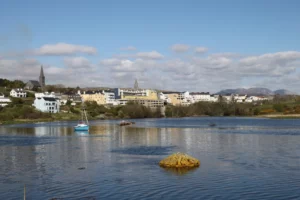Giant’s Causeway Tour – Causeway Coast
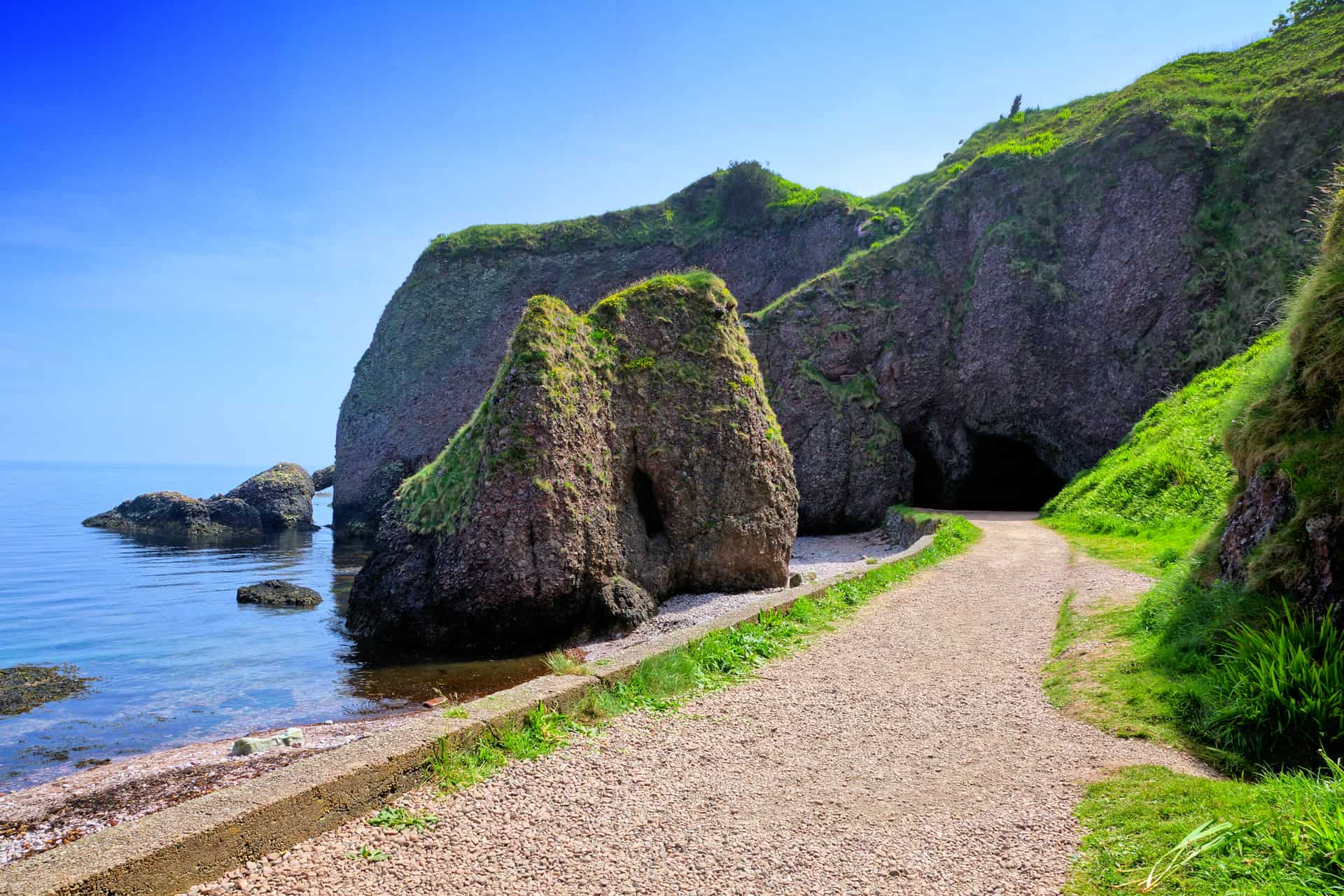
Updated On: April 07, 2024 by Noha Nabil
Unlock all the shrouded mystery in such a remarkable site of the Giant’s Causeway. Get to see the remains of a bygone volcanic age and the rare organisms there, too. The site has been a marvel for countless visitors over centuries. It has been admired for the rugged symmetry of the columns that served as a natural protective barrier against storms raging from the Atlantic.
“You are standing on, or are about to visit, one of my favourite places—the jewel in the crown of the fabulous coast of Antrim. It is a site of World Heritage and therefore ranked alongside Mount Everest and the Giant Redwoods of California for its importance to humankind. Volcanic activity helped Finn Mc Cool forge this wonder of the World some 60 Million years ago. Today, it is the habitat of rare plants and animals. Please treat their home with the pride and the care it deserves”. – David Bellamy
Ready to Visit the Giant’s Causeway?
Visit Co. Antrim in Northern Ireland and quickly get to this fantastic place at 44 Causeway Rd, Bushmills BT57 8SU.
You can go green and take your bike on Route 93, which goes around the coast from Newry to Ballycastle through Bangor and Belfast. Or take the bus no. 172, of Ulsterbus Service. After getting on the train that takes you from Londonderry or Belfast cities to Coleraine. If you want fresh air, you can go on foot and enjoy the breathtaking scenery over 33 miles. This is the distance along the Causeway Coast Way. It’s directly linked to the trail network of the Giant’s Causeway. If you’re driving, you don’t have to worry about parking.
Giant’s Causeway Story
The story began when a Trinity College fellow, Sir Richard Bulkeley, officially informed the Royal Society of such a phenomenon in 1693. Such a discovery provoked widespread attention among the upper and middle classes.
And three years later, a draughtsman was sent to draw such an astonishing site from every angle. In 1740, Susanna Drury was another artist who also visited the place and stayed there for months. To picture the glamour of the Giant’s Causeway.
Moreover, she ensured the site would gain fame on The Grand Tour. In 1771, Demarest, a French man, brought big news to the world when the Giant’s Causeway was declared a phenomenon that had resulted from previous volcanic activity.
Later, in 1986, UNESCO considered the area a World Heritage Site. The Department of the Environment announced it as a national nature reserve in 1987. In addition, it was announced as the fourth greatest natural wonder in 2005. However, there’s a great debate about who was behind the building or forming the site— Mother Nature, men with primitive tools, or a giant.
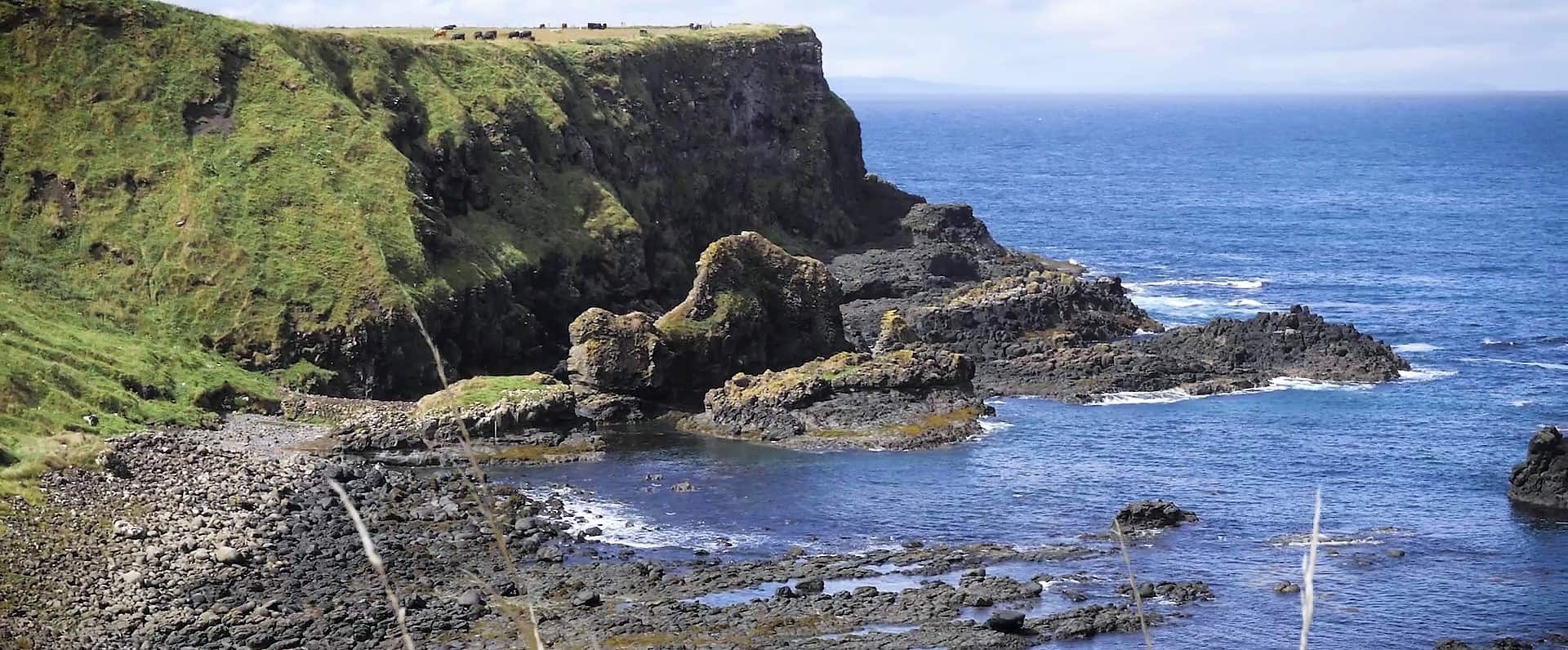
Be steeped in the Geology at the Giant’s Causeway.
Since then, Antrim has been exposed to intense natural catastrophes and volcanoes in the Paleocene Era about 60 million years ago. A large-scale lava plateau appeared on the surface when fluid basalt thrust into the chalk beds in that area.
Then, contraction occurred due to cooling lava, giving cracks that gradually increased underground and took the shape of pillars. Eventually, those structures were cracked horizontally with a concave-shaped bottom surface and a convex-shaped upper surface.
The cooling speed of lava controlled their size. Such a network of prolonged structures formed today’s columns that the world has been astonished by their beauty.
Legend of the Causeway – The Famous Finn MacCool and More!
Fionn mac Cumhaill, or Finn MacCool, a legendary Irish giant, was said to be behind building a causeway with the columns we know today. The Fenian Cycle of the Gaelic Mythology presented Fionn in a challenge with Benandonner, a Scottish giant. So, a causeway crossing the North Channel was built by Fionn to meet the other giant.
Two different stories were narrated about Benandonner being defeated or deceived by Fionn. One entails Fionn hiding after noticing that Benandonner’s foe is more significant than his. So, Oonagh, Fionn’s wife, made him pretend to be a baby and put him into a cradle.
Then, when the other giant saw Fionn’s size as a baby, he believed that its father had to be a giant. As a result, Benandonner was gripped by fear and escaped with his life back to Scotland. Hoping to stop Fionn from crossing the causeway or following him, he demolished the causeway.
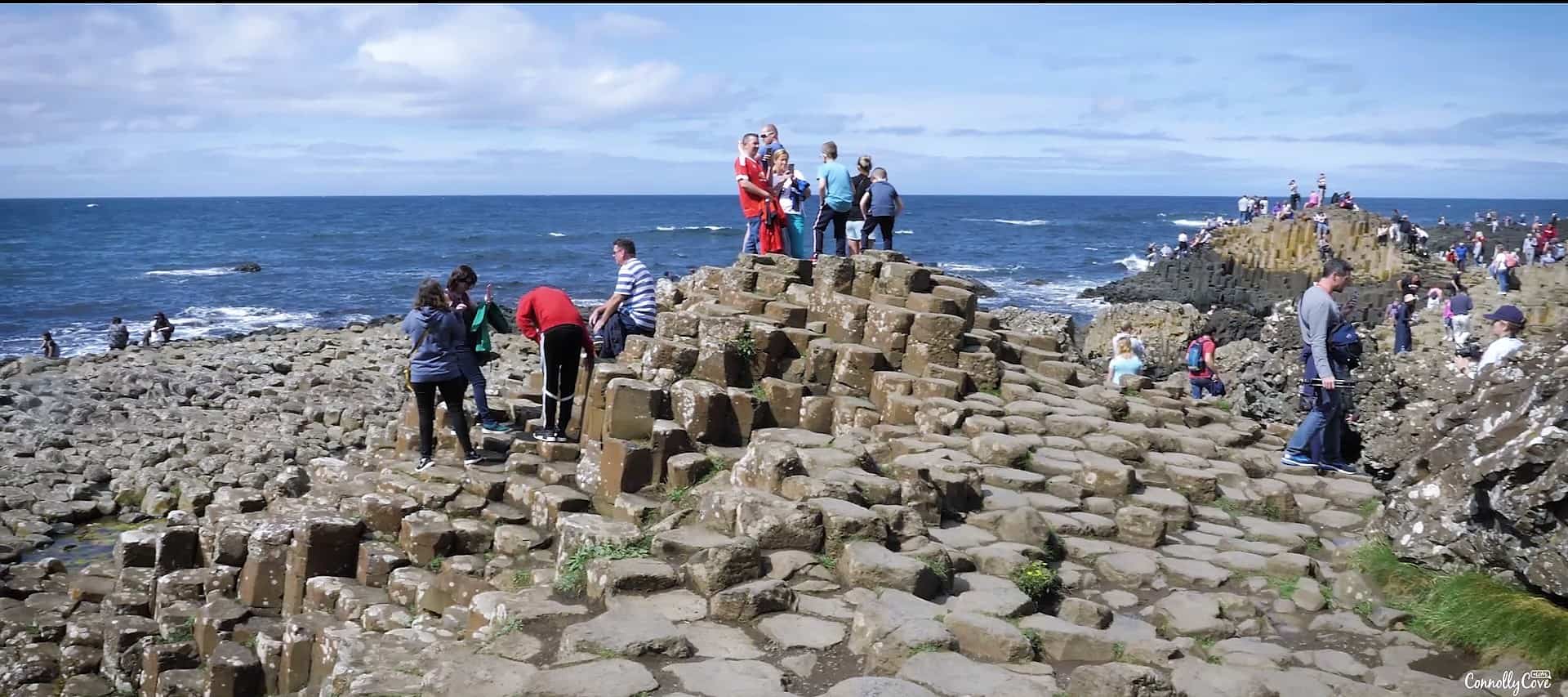
Since then, some basalt columns at Fingal’s Cave, on a Scottish isle on the opposite side, have been the exact shape of those on the Irish side. This greatly affected the telling of such a story.
Generally, Irish mythology presented Fionn as a hero, not as a giant, capable of doing extraordinary things. When reading Fairy and Folk Tales of the Irish Peasantry, one will be introduced to pagan gods converted to fairies and pagan heroes who change gradually into giants.
No tales about the Giant’s Causeway relate to the pre-Christian Era. However, a connection has been noticed between our Causeway and paranormal creatures in Irish mythology, Fomhóraigh. That race was sometimes figured as giants, and it has been believed that they might be a pantheon of the pre-Christian Era.
Things you can’t miss at the Giant’s Causeway
-
Grand Causeway
The giant outcrop of the site is beautifully formed with its stunning columns. It was included on the World Heritage list as a cultural and natural site in 1986 because it meets UNESCO’s criteria. It represents the earth’s evolution history during the tertiary epoch and contains rare natural phenomena.
-
Giant’s Causeway’s Visitor Centre
Heneghan Peng Architects (HPARC), based in Berlin and Dublin, won an international competition to design a new visitor centre. That was after the first one had been burned in 2000, and the prize was £18.5 million. Their design for the new building won numerous awards. The first visit to the place was in 2012.
-
Giant’s Boot
To find the Giant’s Boot easily, take the path at Port Noffer that leads you directly to the sea. Legend has it that Finn lost a boot of size 93.5 when he ran away from Bennandonner.
-
Wishing Chair
A group of basalt stone columns were arranged naturally and beautifully, forming the Wishing Chair, a throne that all visitors sat on during their visit, which they found always smooth and dazzling. For some time, ladies only were allowed to enjoy sitting on it. It’s said that wishes made at the Wishing Chair always come true.
-
The Camel
Portnaboe’s, the monster camel that transformed into stone! It was the only animal, as tales entail. Fionn could ride that for his long-distance rides. It turned into stone, now situated at the bottom of the cliffs. Cooling lava caused such formation.
-
Shepherd’s Steps
A whopping 167 steps carved in nature! Enjoy this beautiful picturesque walking down the Red Trial along the clifftop.
Wildlife at the Giant’s Causeway
Giant’s Causeway shelters many organisms and plants, some even rare. It hosts:
Seabirds: there are Petrels, Shags, Fulmars, Razorbills, Cormorants, Guillemots and Redshanks.
Plants:
- Sea spleenwort furn: It’s named for its appearance on Europe’s coasts from South to North.
- Skilla verna: A small flowery plant that can reach a height of only 15 cm. It can be found near the sea of Europe on dry grasslands. Based on a poll made by Plantlife charity, skilla verna was chosen to be the County Flower.
- Rabbitfoot clover: It’s also a flowering one from the Fabaceae species. It is found in many parts of Europe. It also has a fruit with only one seed.
- Festuca: or sea fescue from a grassy species called Poaceae. It has leaves during the whole year. It can reach a height of 200 cm.
- Long bracted orchid: This beautiful plant can be found in Morocco and Europe, but only 3 have been found the causeway till now. Two of them were found in 2009 and 2016.
- Stromatolite: Stromatolites are formed by blue-green algae, which release carbonate and give them shapes like domes. It was strange to find a colony of this type, for it is usually found more in warmer and saline waters than that of the Giant’s Causeway.
- Professor Andrew Cooper was among a group of scientists from the University of Ulster when he noticed them accidentally; they were still young.
- Their fossils are 3.5 billion years old, and they immensely helped in providing the atmosphere with oxygen.
- You can see them floating above the usual water flow because of their constant need for freshwater passing through them, and are also found in pools of little depth.
- So, as a regulation to preserve them, some conservationists recommended providing proper protection against destruction, and the National Trust is in charge of that.
Fungi:
- Meadowsweet gall: Henry was the one who made two official records by discovering the gall in not only Ireland but also in the UK. One of these discoveries was at Giant’s Causeway in 2016. Can you imagine the second one was on land near the Giant’s Causeway, too? That was in September 2016.
Animals:
One can usually see 1 or 2 lizards, but in the year 2016, Dr Cliff Henry spotted a family of five lizards. There are also a few types of insects for those fascinated with moths.
“Some of our biggest and most beautiful moths can be persuaded to pose for photos on a finger”.
– Dr. Cliff Henry
Projects for Schools
Annual projects are arranged by the Giant’s Causeway’s rangers in cooperation with local schools. Ballytober, Stradbilly, and Dunseverick Primary Schools get their students to engage in some farming activities annually—planting, growing, and harvesting.
Teaching children how to protect the environment is necessary to support going green. Pupils come to Innisfree Farm under the management of Giant’s Causeway’s rangers, Christie Greer and Dr. Cliff Henry. Such a project is also carried out in memory of a past hero and potato wizard, John Clarke.
Ballintoy, a small village of the civil parish in County Antrim, witnessed the birth of John Clarke in 1889. Although he left school when just a 12-year-old boy, he read many books about potatoes at Ballycastle Library. After that, his intense devotion grew to doing experiments on breeding potatoes. He was awarded the OBE (the Most Excellent Order of the British Empire) for his works in 1969.
Moreover, “Ulster” was a prefix for most potato types grown under his supervision.
In 2016, Dr. Cliff expressed his happiness about the project, saying:
“We are delighted to have worked with pupils from the local community again, and together, we have harvested a good crop of Maris Piper potatoes, which the children could take home for their tea.”
Looking for a Hotel? Check out the Giants Causeway Hotel
The Giants Causeway Hotel welcomes you, presenting a mix of old-fashioned and modern styles.
For all occasions, even weddings, the hotel provides stunning vines with suitable menus for each one. There is also free parking and wifi. Meals are served too at the hotel’s restaurant. So, don’t waste time and enjoy every single moment.
The great thing about this Giants Causeway hotel is that it’s on the stunning UNESCO World Heritage site. You can’t get any closer to the popular attraction of the Giants Causeway than here.
It’s the perfect place to stay and enjoy as you explore all the North Coast offers. Staying at the Giants Causeway Hotel guarantees free onsite parking and free entry into Northern Ireland’s top visitor attraction.
Giant’s Causeway Scotland
People may not know that the Northern Ireland Giant’s Causeway has a Scottish Causeway identical to the attraction here. Located on the Isle of Staffa, Fingal’s Cave is surrounded by an exciting legend.
This beautiful natural wonder was formed with the same type of lava that created the Giant’s Causeway in Northern Ireland. The Scottish Giants Causeway was named after James Macpherson’s 18th-century poem, Fingal. The Irish mythology legend of Finn MacCool inspired his poem.
There is more in common with the two causeways than just a poem. Both were created over 60 million years ago and share the same unique hexagonally joint basalt pillars.
The Scottish cave was formed when a vast pressure forced a crack to open. Then, it was moulded by violent waves striking Staffa thousands of years ago. This natural wonder, like the Giant’s Causeway, has inspired and captivated people for many centuries.
Giant’s Causeway Scotland Popularity
In 1829, composer Felix Mendelssohn visited Fingal’s Cave while touring Scotland. His Hebrides Overture, also known as Fingal’s Cave, was written the following year.
Medelssohn’s work helped the Scottish landmark become a popular tourist attraction. Many famous faces have also visited the site, including Queen Victoria, Prince Phillip, Sir Walter Scott, William Wordsworth and many others.
During the Victorian era, many tourists would visit the attractions when cruises to the Western Isles became very popular.
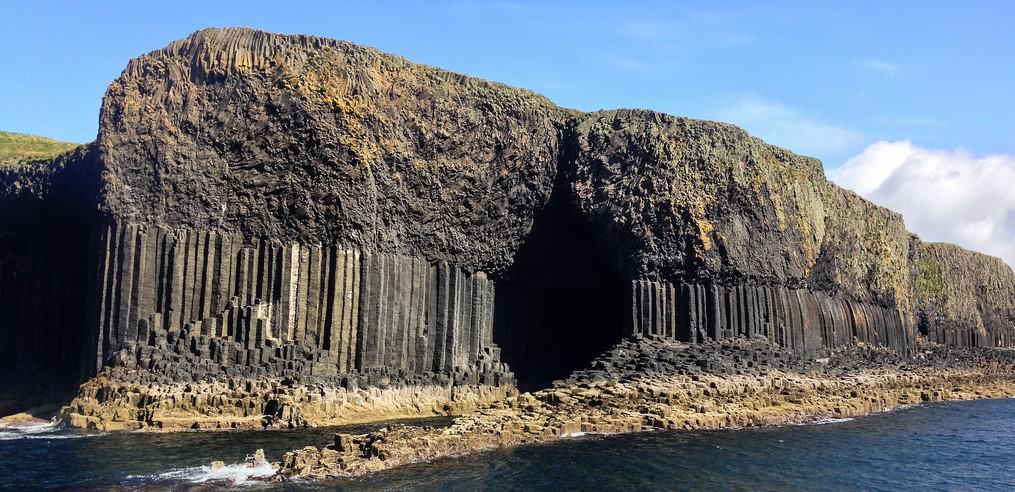
The National Trust looks after the Isle of Staffa. They have been looking after the Isle of Staffa since 1986. When a New York advertising executive Jock Elliot gifted it to the organisation.
Jock Elliot had initially bought the island as a gift for his wife on her 60th birthday. But she only kept it for a few days before handing it to the charity.
So, if you have experienced all that there is about the Giant’s Causeway in Antrim, why not take a trip to Scotland and explore its version as well. It will undoubtedly be worth it – so much history and amazingness to uncover.
Facilities at the Giant’s Causeway
For Foreign Visitors:
Tremendous facilities and services are offered at the Visitor’s Centre. Audio guides are there to help to you—Polish, Italian, French, Spanish, Russian, German, Mandarin and Japanese. For the Portuguese and the Dutch, guides will be available soon.
General Facilities:
- A fantastic exhibition for the Giant’s Causeway is set up.
- A coffee shop is available for visitors.
- Stunning local gifts can be purchased at the gift shop.
- A bureau de change.
- Tourist Information Centre.
- Three car parks are available and offering Park and Ride.
Family Facilities:
- A path for wheelchairs.
- Baby-changing.
- Baby-carriers are provided.
Booking – How much does getting into the Giant’s Causeway cost?
For the whole property:
You can buy tickets online. These are the standard prices; you can check them and get special pre-purchasing or going green offers.
- Adult: £10.50
- Child: £5.25
- Family: £26.25
A Day out for Groups
Pre-booking is a must for groups, and the visit last for an average of 2 hours.
- Adults: (£8.00 per each).
- Children: (£ 4.00 per each) aged 5 to 18 years.
- Groups range between 15 to 50.
- FIT:
Adults: (£9.75 per each).
Children: (£4.85 per each) aged 5 to 18 years.
Companies: Only for those with an account.
Take a look at the North Coast Group guide for more information on group booking or coach arrivals.
How long do you need to spend at the Giants Causeway?
To enjoy the experience at the Giant’s Causeway, it is recommended to spend two hours there. With these times, you can take in the sites and uncover the fascinating history at the visitors’ centre.
Opening Times
- The coastline: Dawn to dusk
- For North Antrim North path: Dawn to Dusk
- For the Visitor Centre: 9:00 am – 4 pm. Note that the last admission to the Centre is at 3:00 pm.
Contact Information
Website: https://www.nationaltrust.org.uk/giants-causeway
Facebook: https://www.facebook.com/GiantsCausewayNationalTrust
Twitter: https://twitter.com/GCausewayNT
Tel: (028) 2073 1855
Mob: (077) 86661357
Booking Office
Email: [email protected]
Tel: +44 (0)28 2073 3419
Causeway’s Hotel
Tel: 028 2073 1210
Email: [email protected]%20
Splendid Places Nearby
Visiting the Giant’s Causeway makes you eager to know more about other places in County Antrim, like:
- White Park Bay
On the North of Antrim coast, too.
- Portstewert Strand
Its golden sand pleases you.
- Carrick-a-Rede
Have an adventurous walk on a rope bridge at 350 years of age.
- Downhill Demesne and Hezlett House
Explore such a historical site with a view of the North Coast.
Have you ever visited the Giants Causeway in Northern Ireland? One wonder of the world. Let us know your experience in the comments below.
Other Worthy Reads:
The Legend of Finn MacCool and the Isle of Man | Springhill House: A Pretty 17th Century Plantation House | Castle Coole: A Great Neo-Classical House in Ireland | Castle Ward: A place with a Remarkable History




